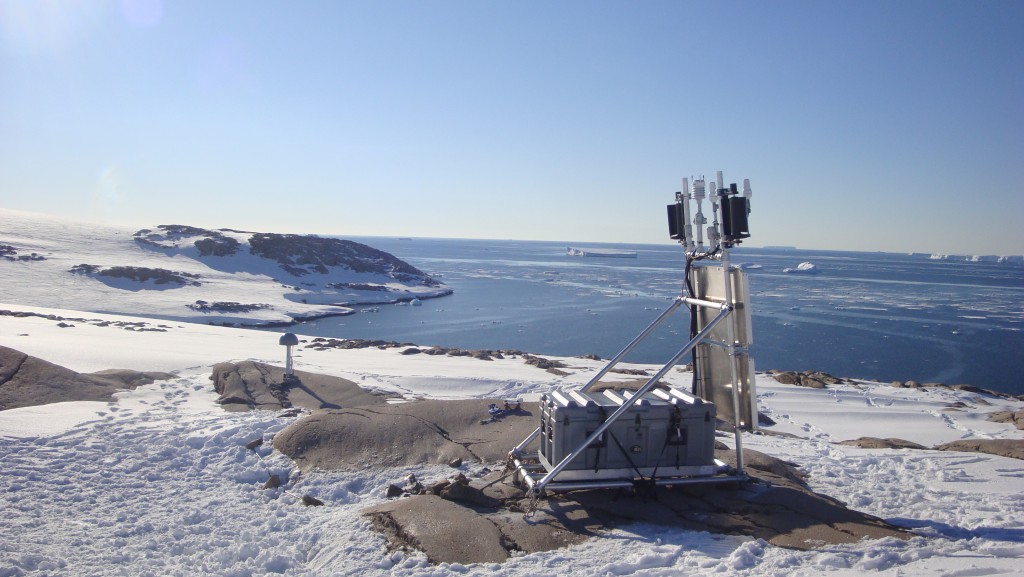Difference between revisions of "Template:POTD protected"
Jump to navigation
Jump to search
Westarctica (talk | contribs) |
Westarctica (talk | contribs) |
||
| (66 intermediate revisions by the same user not shown) | |||
| Line 1: | Line 1: | ||
{| role="presentation" style="margin:0 3px 3px; width:100%; text-align:left; background-color:transparent; border-collapse: collapse; " | {| role="presentation" style="margin:0 3px 3px; width:100%; text-align:left; background-color:transparent; border-collapse: collapse; " | ||
|style="padding:0 0.9em 0 0;" | [[File: | |style="padding:0 0.9em 0 0;" | [[File:Backer Islands GPS.jpg|300px|thumb]] | ||
|style="padding:0 6px 0 0"| | |style="padding:0 6px 0 0"| | ||
'''[[ | The '''[[Backer Islands]]''' are a chain of small islands at the south side of [[Cranton Bay]]. The islands trend northwest for 22 kilometers (12 nmi) from the [[ice shelf]] which forms the southern limit of the bay. | ||
In | In 2011, scientists from the POLar Earth-observing NETwork (POLENET) traveled to the Backer Islands via a Twin Otter aircraft and installed a GPS monitoring site. This equipment is used to remotely monitor GPS and seismic data that will help scientists determine trends in ice sheet movement and other geophysical phenomena. | ||
<p><small> | |||
<p><small>Photographer: Ellie Boyce (UNAVCO)</small></p> | |||
[[:Category:Images|'''(More Images)''']] | [[:Category:Images|'''(More Images)''']] | ||
<div class="potd-recent" style="text-align:right;"> | <div class="potd-recent" style="text-align:right;"> | ||
Latest revision as of 18:28, 22 December 2025
|
The Backer Islands are a chain of small islands at the south side of Cranton Bay. The islands trend northwest for 22 kilometers (12 nmi) from the ice shelf which forms the southern limit of the bay. In 2011, scientists from the POLar Earth-observing NETwork (POLENET) traveled to the Backer Islands via a Twin Otter aircraft and installed a GPS monitoring site. This equipment is used to remotely monitor GPS and seismic data that will help scientists determine trends in ice sheet movement and other geophysical phenomena.
Photographer: Ellie Boyce (UNAVCO) |
